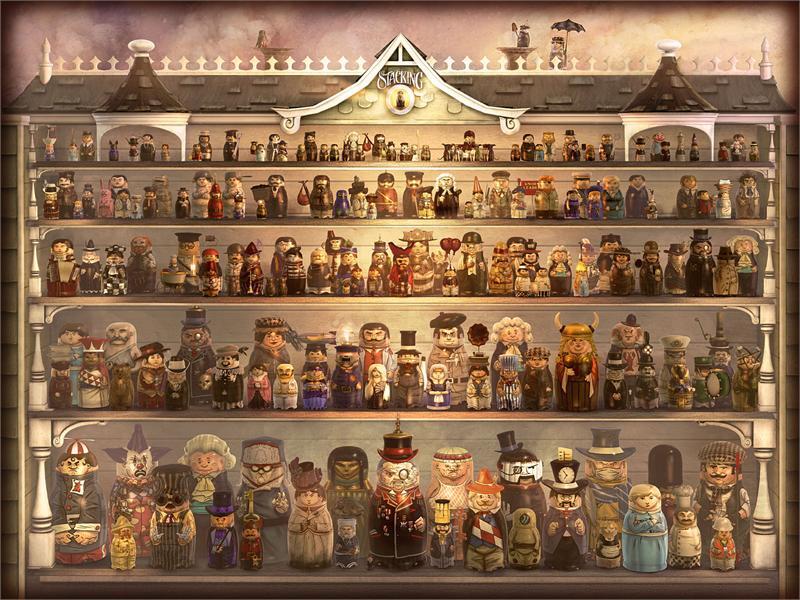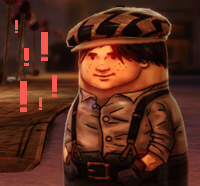Hail To the STAC-KING!
Here's a confession: when Stacking first released in 2011, I didn't play it. I was in college at the time studying theater (because I wanted to become the next David Bowie or something) and while games were on my radar, I was also mostly concerned about where to pick up the keg for Friday's party or whatever bit of costume design I was supposed to do for my class. I think I was playing New Vegas at the time. Or, more accurately, I had stolen my roommate's copy of New Vegas for the PS3 (yikes!) and that was dominating most of my time. I didn't play Stacking until a few years later and I basically broke my leg kicking myself for not getting to it sooner. Not only was it cute but it was this very lovely merger of mechanics and meaning; a world where identity real consequence and whatever doll your were disguised as didn't just provide a way to solve a puzzle but clearly fit into the game's social space in a very considered way. That's smart design! Everything mixed and mingled in a way that felt important and it made a world that was just as understandable and rules-driven as New Vegas was. I'd been missing out!
Well, it's been a decade since Stacking released and a little less since I first picked it up and found myself delighted. In that time, I've learned a lot about Double Fine. For instance, Amnesia Fortnight. Back then, AF wasn't as well known but it feels like such a big part of the studio's legacy now. Doubly so when you consider that Stacking started as an Amnesia Fortnight Prototype. If you don't know Amnesia Fortnight, it's a two week period where work on our main project is halted so teams can break off to work on different prototypes. Stacking was part the second ever AF, springing from the brain of fantastic artist Lee Petty. It grew from prototype to a game, and that process was also how we got games like Costume Quest and Iron Brigade.
I sat down with Lee to talk about Stacking after ten years and I think the result was a pretty dang great conversation. Lee's got a knack for talking about his process either as an artist or project lead and it was interesting to learn of the earlier forms that Stacking might have taken. Would there have been a baba-yaga? A world of knights and kings? Maybe. Listen and learn!
Ten Years Of Stacking: An Interview With Lee Petty
Game design is all about possibilities and cutting down the branches from the development bonsai tree until you got what you want. In the end, Stacking became industrial, class-focused, and started what I consider a Lee Petty staple: having their character's body be an important part of the mechanics. See also: Headlander. It's also a game that many fans reach out to me about; they talk about how much they want to explore that world again or, now that ten years have passed, how it's become a great game for letting their younger kids learn about puzzle games. I think that's very cool. Stacking is so identifiably itself in a way that's very admirable. I'm very glad that Lee's prototype could grow into something that's endured and I hope he and the team remain proud of what they did.
That said, you know... sorry I was too busy with New Vegas and pizza and dress-design the first time around, Lee. Please don't rat me out to the baba-yaga!












